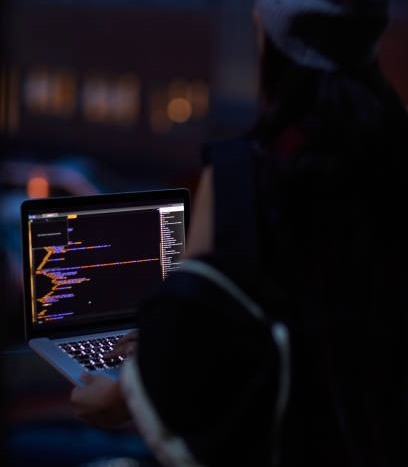Is it possible to invoke a trademark that is not protected in the defendant’s country?

WIPO Arbitration and Mediation Center ADMINISTRATIVE PANEL DECISIONVente-privee.com v. 郑碧莲 (Zheng Bi Lian)Case No. DCN2021-0004
In order for a UDRP complaint to succeed, it is necessary to prove a trademark right similar or identical to the domain name, generating a risk of confusion. Then, it must be established that the respondent has no rights or legitimate interests, and finally, it must be shown that the respondent has registered and used the name in bad faith.
In order to establish this bad faith, it is essential to show that the respondent has prior knowledge of the applicant’s rights and that the disputed registration is aimed at these rights. Being the owner of a trademark protected in the country where the defendant is established is therefore a considerable asset. However, it is not a requirement.
Vente-privee.com is a French e-commerce company that has been operating for 20 years in the organization of event-based sales of all kinds of products and services at reduced prices, including major trademarks.
At the beginning of 2019, Vente-privee.com began a process of unifying its trademarks under a single new name: VEEPEE. This rebranding was widely promoted internationally. It had previously secured trademark rights to the “VEEPEE” sign via a filing an EUTM in November 2017 and via an international trademark filed the same day covering Mexico, Monaco, Norway and Switzerland. Vente-privee.com also owns numerous domain names matching “VEEPEE” such as <veepee.es>, <veepee.it>, <veepee.de> and <veepee.com>.
Having detected the registration of the <veepee.cn> domain name reserved in 2018 by a China-based registrant, the company filed a complaint with the WIPO Arbitration and Mediation Center seeking the transfer of the name.
The likelihood of confusion was easily admitted by the expert, who considered the domain name to be identical to the applicant’s earlier trademarks. On this occasion, he recalls that the trademark does not need to be registered in a specific country for the assessment of the likelihood of confusion.
This is in line with the assessment of WIPO’s Overview 3.0, which specifies in its section 1.1.2, quoted by the expert, that in view of the international nature of domain names and the Internet, the jurisdiction in which the trademark is protected is not relevant for the analysis of the first criterion. Bearing in mind, however, that this factor may be important for the examination of the other criteria.
the Panel notes that the Respondent has no business relationship with the Complainant and has not received any authorization from it to reserve the disputed domain name. As the Respondent did not respond to the Complaint, the Panel finds that Vente-privee.com has established that the Respondent has no rights or legitimate interests in the disputed domain name.
Finally, on the issue of bad faith, the expert insists on the arbitrary nature of the name VEEPEE: “VEEPEE is a made-up word with no particular meaning in Chinese or English”. He also highlights the fact that the domain name has not been actively used, but on the contrary refers to a website in English, accessible to all, on which it is for sale.
Therefore, the expert orders that the disputed domain name <veepee.cn> be transferred to the Complainant.
This decision is a reminder that it is important to choose the right trademarks to be used in a UDRP complaint. Ideally, it is necessary to prove a registration in the country of the registrant, if possible prior to the domain name. In the absence of a registration in the relevant jurisdiction, it is important to demonstrate that the trademark is used and known outside the boundaries of its registration.
In this instance, we note that the disputed domain name is indeed subsequent to the applicant’s trademarks, but prior to the Vente-privee.com rebranding operation by almost a year. This information might have required analysis had the Respondent responded to the Complaint. Information that could have been counterbalanced, however, with the registration date of the name <veepee.com> (the <.com> targeting the international), which is very old: December 6, 1999.



 Monitoring, protecting and promoting your trademarks online: these are the core business activities of the Dreyfus law firm.
Monitoring, protecting and promoting your trademarks online: these are the core business activities of the Dreyfus law firm.
 A website can only be accessed if a system is able to link the URL entered by a user in his or her browser to the server of the website in question. This is called the Domain Name System (DNS). The DNS operates as an intermediary system through sending a request on the Internet in order to make the link between the address entered in the browser by the user and the actual access to the site. This is the reason why the DNS is often compared to a telephone directory as it allows to translate the names given by the user into names that are intelligible for machines.
A website can only be accessed if a system is able to link the URL entered by a user in his or her browser to the server of the website in question. This is called the Domain Name System (DNS). The DNS operates as an intermediary system through sending a request on the Internet in order to make the link between the address entered in the browser by the user and the actual access to the site. This is the reason why the DNS is often compared to a telephone directory as it allows to translate the names given by the user into names that are intelligible for machines.
 On the 23rd of November 2021, the French Department of Economy and Finance ordered the dereference of the US online sales platform “Wish” from search engines. This decision was issued after an investigation conducted by the Directorate-General for Competition, Consumer Affairs and Fraud Prevention (DGCCRF) on a line of goods sold by the online platform. This investigation revealed a high percentage of non-compliant and hazardous products.
On the 23rd of November 2021, the French Department of Economy and Finance ordered the dereference of the US online sales platform “Wish” from search engines. This decision was issued after an investigation conducted by the Directorate-General for Competition, Consumer Affairs and Fraud Prevention (DGCCRF) on a line of goods sold by the online platform. This investigation revealed a high percentage of non-compliant and hazardous products.
 Registering your trademark allows you to protect it. For a French trademark, it must be registered with the INPI (National Institute of Industrial Property), but the protection can be extended to the European Union (EUIPO) and internationally (WIPO). When a trademark is registered on the national territory, in order to extend its protection, it is possible to register the trademark within the European Union and internationally. There is a right of priority which allows to file other trademark applications while benefiting from the filing date of the first application. The priority period is six months for trademarks.
Registering your trademark allows you to protect it. For a French trademark, it must be registered with the INPI (National Institute of Industrial Property), but the protection can be extended to the European Union (EUIPO) and internationally (WIPO). When a trademark is registered on the national territory, in order to extend its protection, it is possible to register the trademark within the European Union and internationally. There is a right of priority which allows to file other trademark applications while benefiting from the filing date of the first application. The priority period is six months for trademarks.
 On the 24th of March 2022, a new name space will launch in Australia: “.au direct”.
On the 24th of March 2022, a new name space will launch in Australia: “.au direct”.


